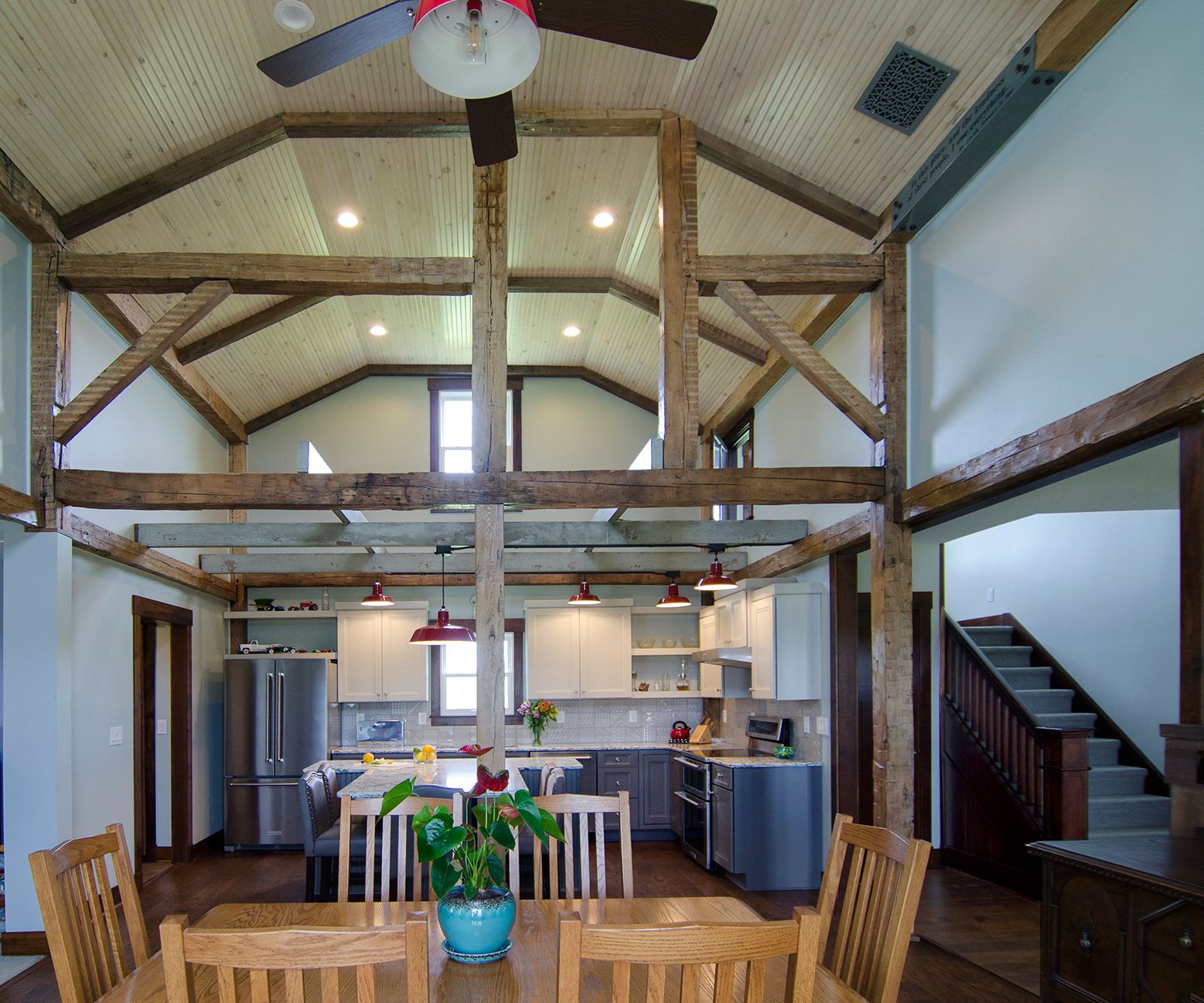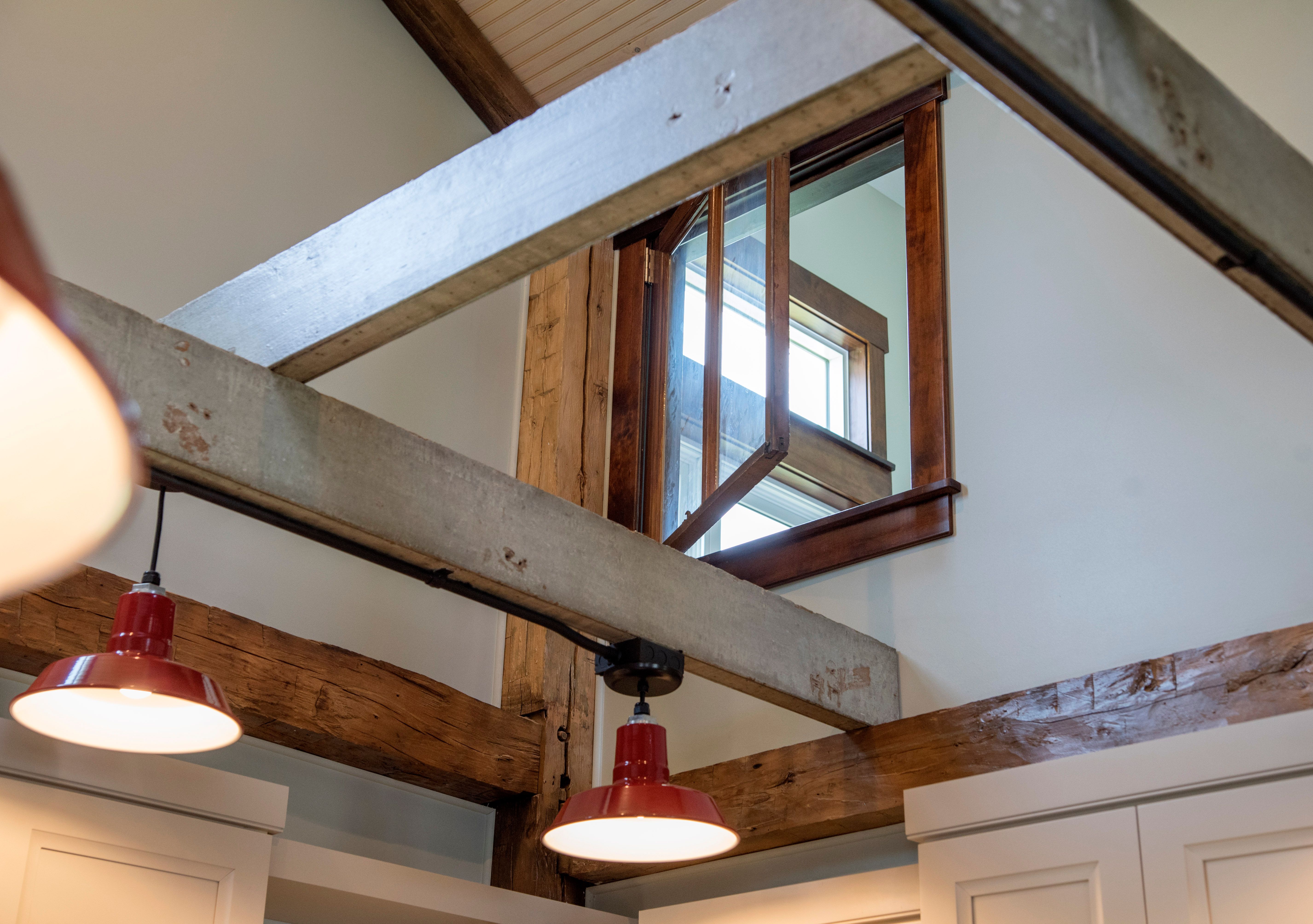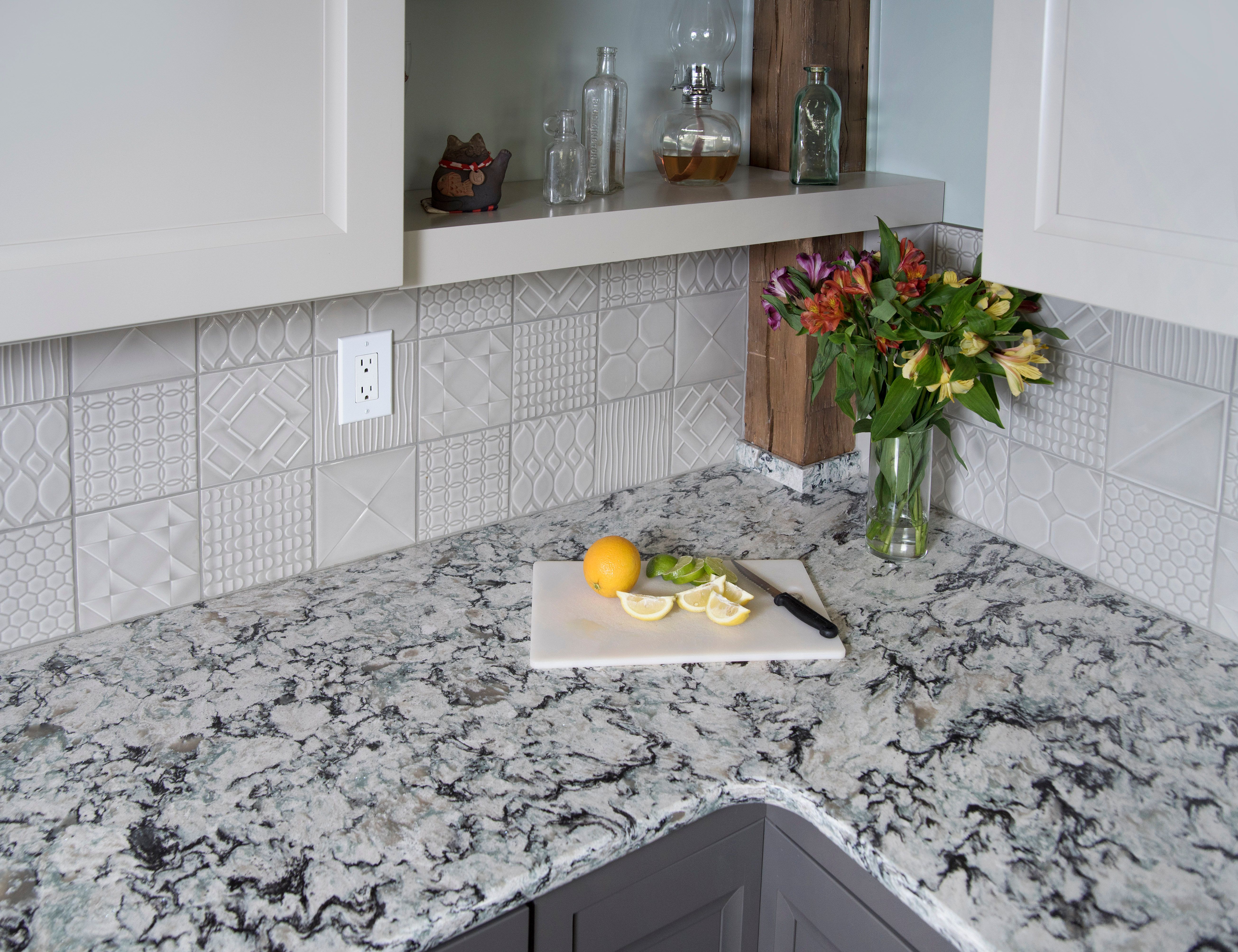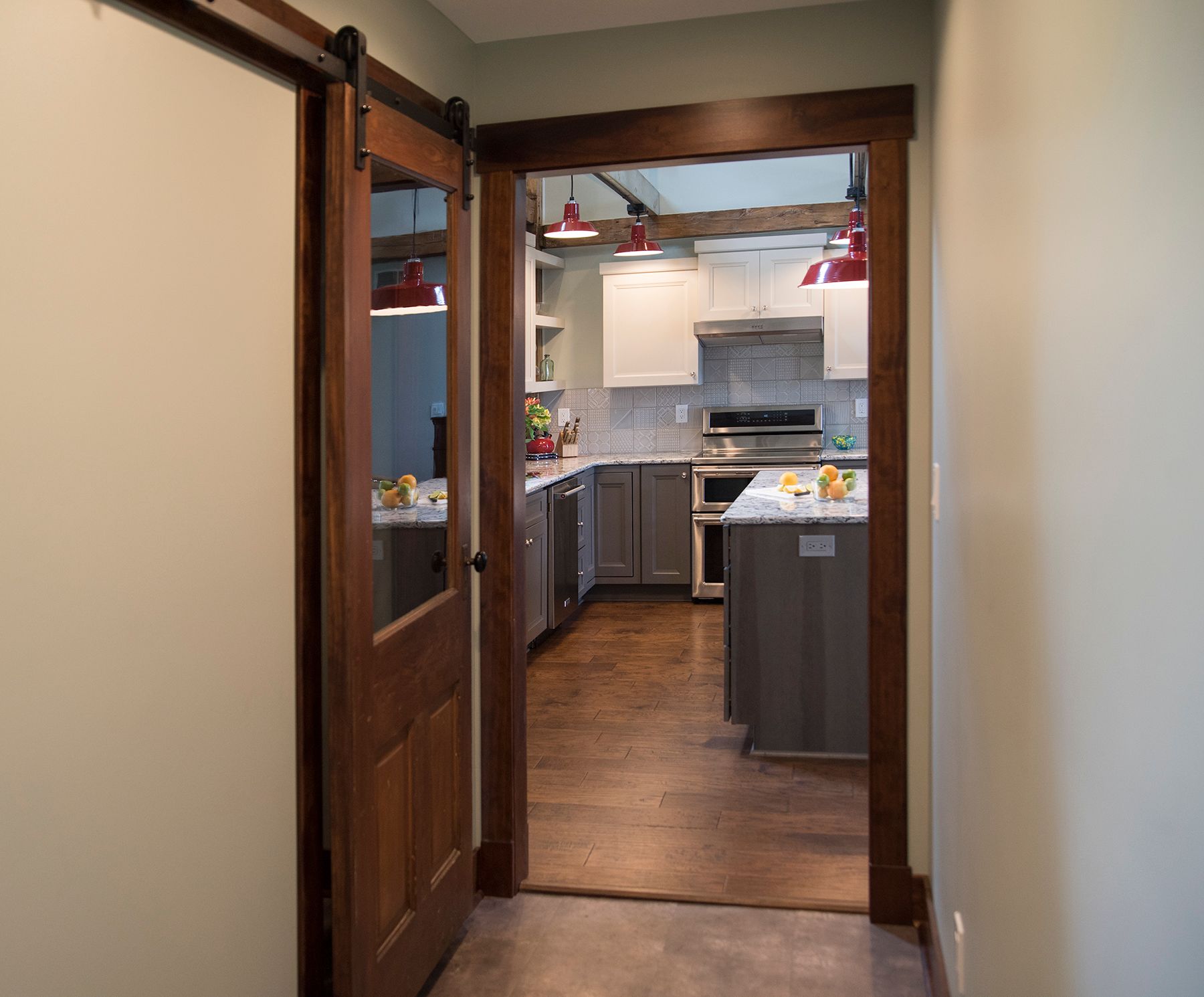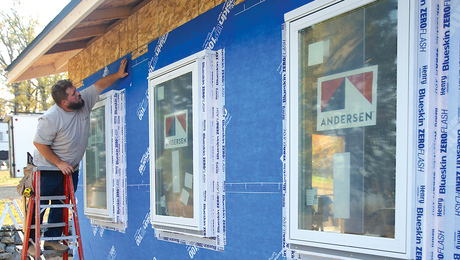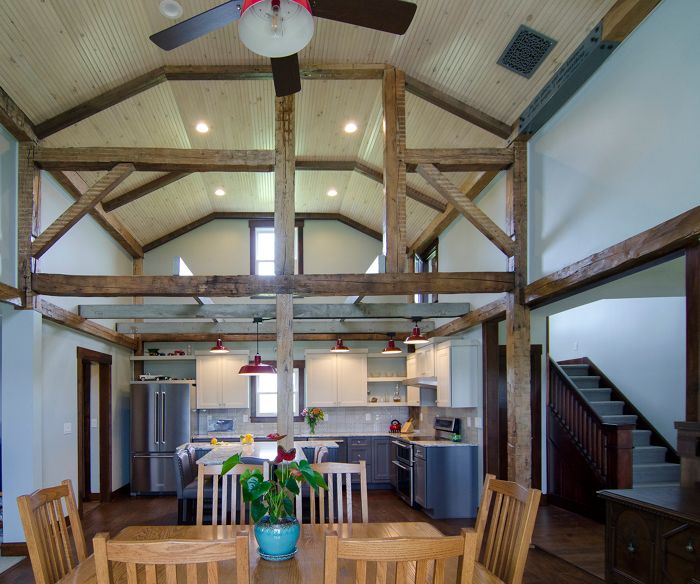
Our vision for this project was to transform the central timber frame portion of the home into a two-story, cohesive, and open volume. We removed the attic floor and interior walls that cut through the space. In the process of removing the floor, we found that the original joists had a very unique beaded detail on the bottom. We re-used these joists, maintaining their aged patina, to create the trellis from which we hung the task lighting. The timber frame had been long covered with plaster and paint. We removed the plaster exposing the original timber frame with its hand-hewn texture and hand carved joinery. Dry-ice cleaning removed the 150 years worth of layered paint, dirt, and debris to reveal gorgeous, aged timbers. Over a century of additions and remodels had left the timberframe somewhat sliced and diced, requiring us to strategically add and re-inforce some timber elements while not detracting from the historical story of the home. We used LVL beams to open the space to the adjacent living room and foyer stairwell areas. Above the kitchen cabinetry, we re-glazed one of the original sunroom window sashes and installed it as a Juliet window from the stair landing, looking over the kitchen and dining room area.
Adjacent to the kitchen and pantry, we built a spacious pantry, using one of the 1920s doors in a sliding barn door application. The kitchen employs Wellborn cabinets in a combination of two painted maple finishes and stained hickory on the large island. The homeowners did not want to cover the timber frame, so we opted for floating shelving around the timbers in the corners of the room. Cambria quartz countertops create beautiful and functional work surfaces. At the dining area, we re-used some of the original 2″ thick poplar planking that had been used as exterior sheeting around the timber frame to create a one-of-a-kind wainscoting. The story of the home was the most critical component of this project. The homeowners wanted to maintain family memories. At family gatherings, they wanted their relatives to feel like the newest iteration of the old family farmhouse was still a part of their history.
